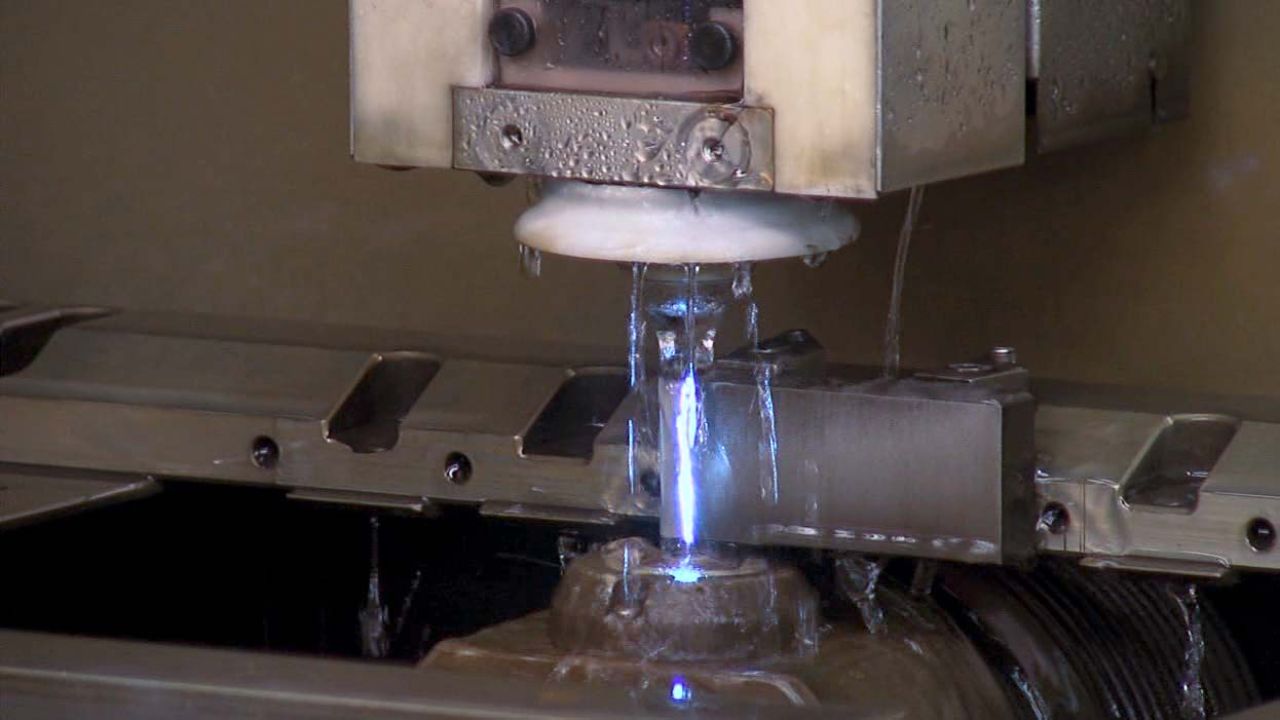Wire Electrical Discharge Machining (Wire EDM) is one of the most innovative and precise ways of machining metal components. It is a mixture of electricity and high-tech control systems to provide the outcomes that could not be delivered by traditional cutting tools. Wire EDM enables you to cut the toughest metals with the finest accuracy using the intensity of controlled sparks and create the tiniest designs, right angles, and mirror finishing. According to Langdi Precision, a reputed supplier of high-precision mold components, they employ standard Seibu and Sodick Wire EDM machines when producing tolerances of 2 microns and finishes of Ra0.31. Many people wonder how does a wire edm work and cuts metals with electrical sparks for precise, smooth results.
The Science behind Wire EDM
The essence of the Wire EDM process is that it is based on a simple yet effective principle that is material removal by means of controlled electrical discharges. It is a type of machine that employs a thin electrode of an electrically charged wire, mostly of brass or copper. This wire does not need to touch the piece of work; rather, it forms a series of high-frequency electrical sparks between the electrical wire and the conductive material undergoing machining. These sparks produce high temperatures in localized areas up to very high temperatures, causing melting and vaporization of small areas of the metal surface.
Step One: Setting Up the Workpiece and Wire
The Wire EDM consists of loading the workpiece onto the worktable of the machine and dipping it in a dielectric fluid, which is usually deionized water. This fluid is very vital as it serves as an insulator until such a time that the voltage across the wire and the workpiece becomes sufficiently large to generate a spark. It also cleanses away the minute particles of the eroded material, making sure of a clean cutting area, and it also avoids unwanted short circuits.
The wire is running under constant tension, and fed off a coil and directed through the upper and lower heads of the machine with precision. These guides travel on programmed paths specified by CAD data, which can be used to produce detailed shapes and fine internal geometries, which is not possible with conventional milling or turning.
Step Two: Controlled Spark Erosion and Material Removal
After the setup is done, the machining process starts. Power provided to the machine creates a sequence of regulated electrical impulses through the wire and the workpiece. A pulse generates a spark, which removes a small piece of metal from the surface of the workpiece. These particles are immediately cooled and washed away by the dielectric fluid, and the surface is ready to receive the next discharge.
The high-technology Seibu and Sodick Wire EDM machines of Langdi Precision offer automatic control systems that automatically adjust pulse energy, frequency, and wire feed rate to material and cutting needs. This maintains a constant cutting condition, the highest rate of removal of the material, and a high quality on the surface. These delicate modifications enable the process to produce unmatched accuracy in the order of 2 microns- and are appropriate where it comes to producing complex components and where each detail matters.
Step Three: Achieving the Final Finish
Among the most important qualities of the process of Wire EDM, there is the possibility of achieving an outstanding surface finish. When a rough cut is completed, more finishing passes or skim cuts are made at lower discharge energy levels. These passes eliminate any remaining roughness and smooth down the surface to a smooth, polished surface.
The quality of the end product is further improved by the oil-cut EDM process of Langdi Precision. Oil medium cutting offers a finer surface and minimises oxidation, resulting in a fine finish with typically an Ra0.31 or less. Of particular use here is on mold components and precision inserts, where smoothness and accuracy are essential to assembly and performance.
Step Four: Inspection and Quality Control
When machining is done, each component is inspected thoroughly to be sure of the accuracy of dimensions and also the integrity of its surface. Langdi Precision uses the latest measuring tools, such as Nikon projectors, Rational 2.5D measuring systems, TRIMOS height gauges, etc., to make sure that every part is of the highest quality. Non-contact of the Wire EDM means that there is no stress or deformation left in the final piece, and thus the components fit perfectly and work perfectly too.
Conclusion
The Wire EDM system is the ideal combination of science, accuracy, and artistry. As the first spark turned into the final polish, all the steps of the process are aimed towards the best precision and reproducibility. Langdi Precision has perfected the process of converting electrical energy to precision engineering by using the most sophisticated machines supplied by Seibu and Sodick, who provide ultra-fine mold components of the highest level of industry demand. Since manufacturing has grown to be more complex and more precise, Wire EDM has become an essential technology that can be used to mark the future of fine component machining, one spark at a time.

